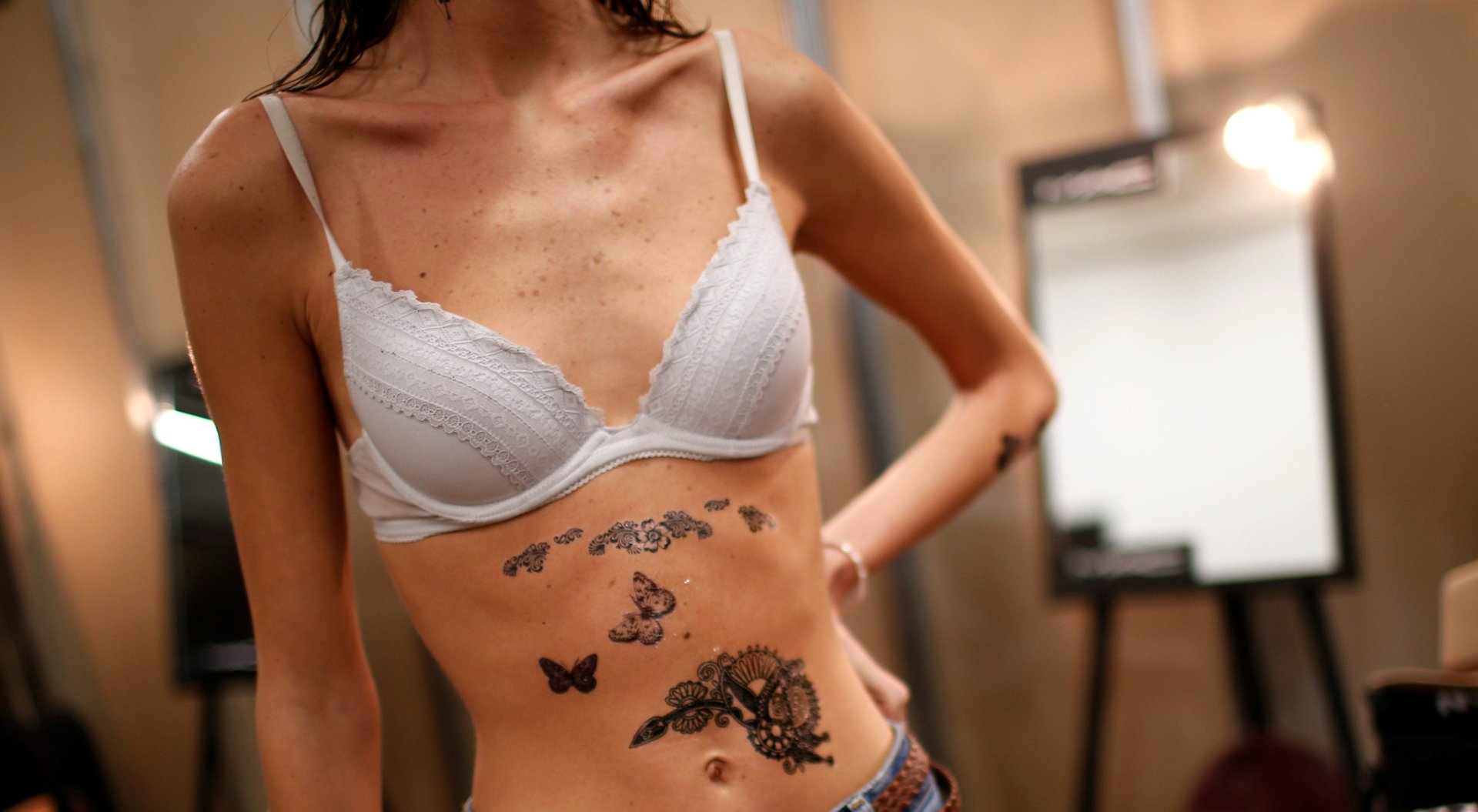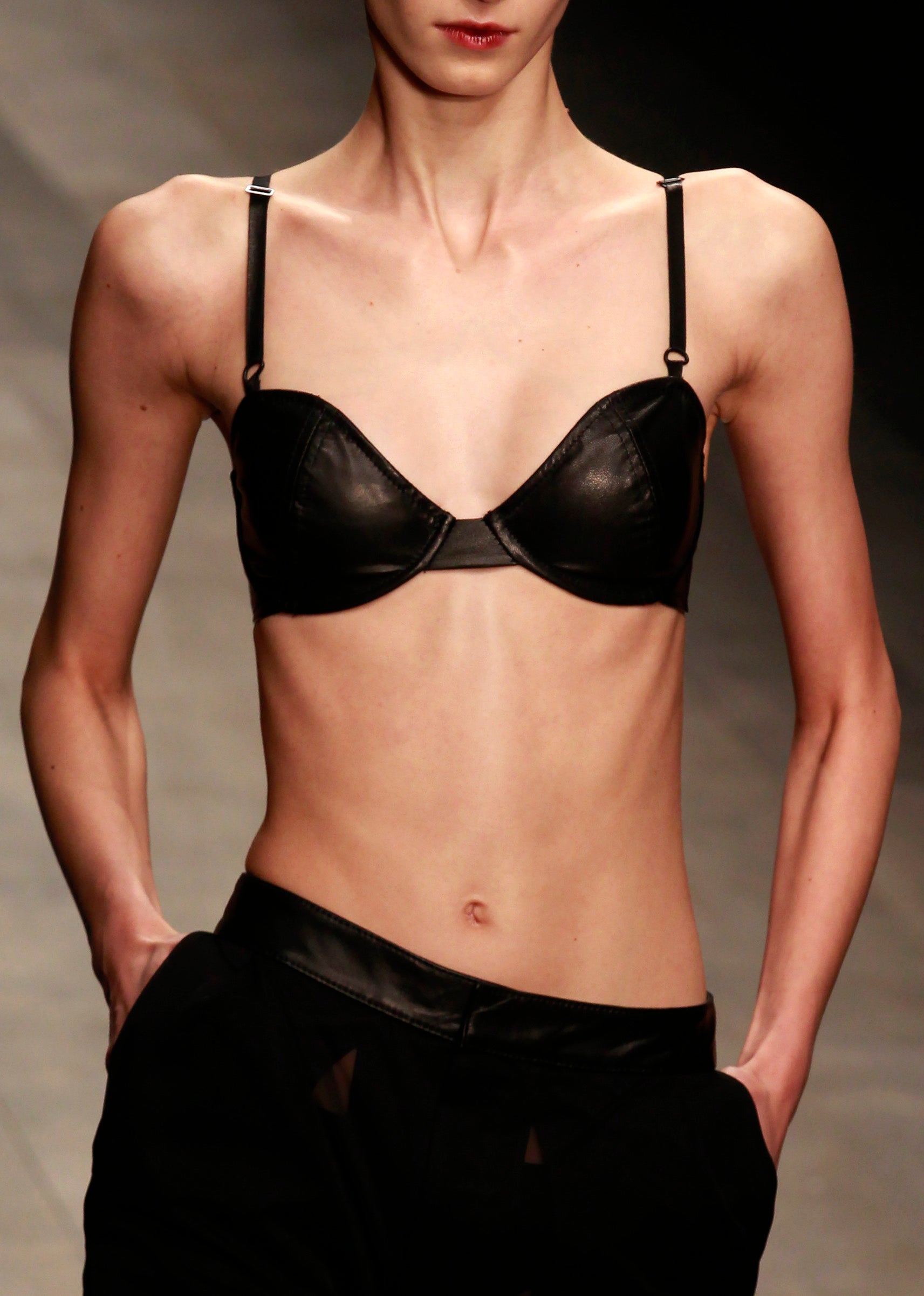A new charter treats fashion models like what they are: workers doing high-risk physical labor
The physical risks of being a fashion model aren’t the same as those of, say, a coal miner. Traumatic injuries tend to be rare when you’re walking the runway or shooting a new campaign.


The physical risks of being a fashion model aren’t the same as those of, say, a coal miner. Traumatic injuries tend to be rare when you’re walking the runway or shooting a new campaign.
But modeling carries its own health concerns. A small study by Model Alliance, an advocacy group focused on improving working conditions for models, in conjunction with researchers at Northeastern and Harvard universities, found that 81% of the models surveyed reported a body mass index of less than 18.5, which the World Health Organization deems “underweight.” Likewise, the pressure frequently led to what they called “unhealthy weight control behaviors,” including eating disorders. In that regard at least, modeling is sort of like being a professional football player—a job with enough prestige that it attracts people willing to risk their health for it—only with much lower pay.
But there’s growing agreement within the fashion industry and among watchdog groups that health risks in modeling need to be addressed. Now the world’s biggest rivals in luxury fashion–LVMH and Kering, which between them own brands including Louis Vuitton, Dior, Céline, Gucci, and Saint Laurent—have joined forces on a charter meant to protect the well-being of models both on and off the job.
The charter covers a broad range of workplace issues, including who brands can hire and suggested workplace rules. Among its key guidelines are the following:
- Brands are banned from using female models who are French size 32 (US size 0, or UK size 4), and men who are size 42. Only larger models are allowed.
- Brands are only permitted to work with models who have gotten a valid medical certificate from their agencies within the past six months, affirming that they’re in good health and able to work.
- Brands cannot hire models under the age of 16 for shows or shoots where they are meant to represent adults.
- Models must have access to food and drinks that comply with their dietary requirements, and brands must provide them with information on maintaining a healthy diet during the workday.
- Models must be treated with respect and professionalism, and in cases where nudity is required, models are never to be alone with anyone involved in the production.
The charter also states that a monitoring committee will be dedicated to making sure everyone adheres to these rules, and will occasionally meet with representatives of the brands, agencies, and models themselves.
LVMH and Kering see the agreement as a big step toward policing the modeling industry, which has become notorious for workplace misconduct that goes beyond just pressuring models to stay skinny. Earlier this year, casting director James Scully grabbed the industry’s attention when he called out Balenciaga, a Kering brand, over one of its casting calls. The casting directors made more than 150 girls wait for hours in a stairwell with the lights out and told them they couldn’t leave.
François-Henri Pinault, Kering’s CEO, told WWD (paywall) that Kering had been working on models’ rights and health since 2015, but said Scully’s whistle-blowing prompted them to action. “That’s where I decided in March, ‘Enough is enough,'” he said. “We are going to put in place some rules and I want those rules to be implemented for the next fashion week.” He called LVMH, which was already working on the subject as well, and they decided to set an example.

Some of the guidelines may be more effective than others. Different countries, including France in 2015, have set restrictions on the minimum body-mass index (BMI) a model can have. But critics of those efforts, including Model Alliance founder Sara Ziff, have said BMI alone isn’t a measure of a model’s health. The same might be said of focusing solely on dress size.
Charter guidelines like the one demanding food and drinks for models might might have greater impact. The Model Alliance study found that requiring employers to provide models with food and a 30-minute break on jobs lasting more than six hours was a more effective measure than setting a minimum BMI.
In a statement, Model Alliance also pointed out that the charter may not adequately take into account the imbalance of power between models and those they rely on for work. “Currently, the burden is on the model to file a complaint, which can be a limitation given the powerlessness of models with respect to other stakeholders, particularly their agencies,” it says. “The modeling industry is a complex multi-level structure—involving agencies, brands, and others with far more clout than individual models. Therefore, even an initiative such as this from key brands will be successful only if the other key players are involved, and the whole system works together.”
LVMH and Kering say they do hope the charter will prompt the rest of the fashion industry to follow their lead. But there’s a lot of runway still to go. Racial discrimination in modeling, for example, is a whole other problem (paywall) that fashion has yet to adequately address.